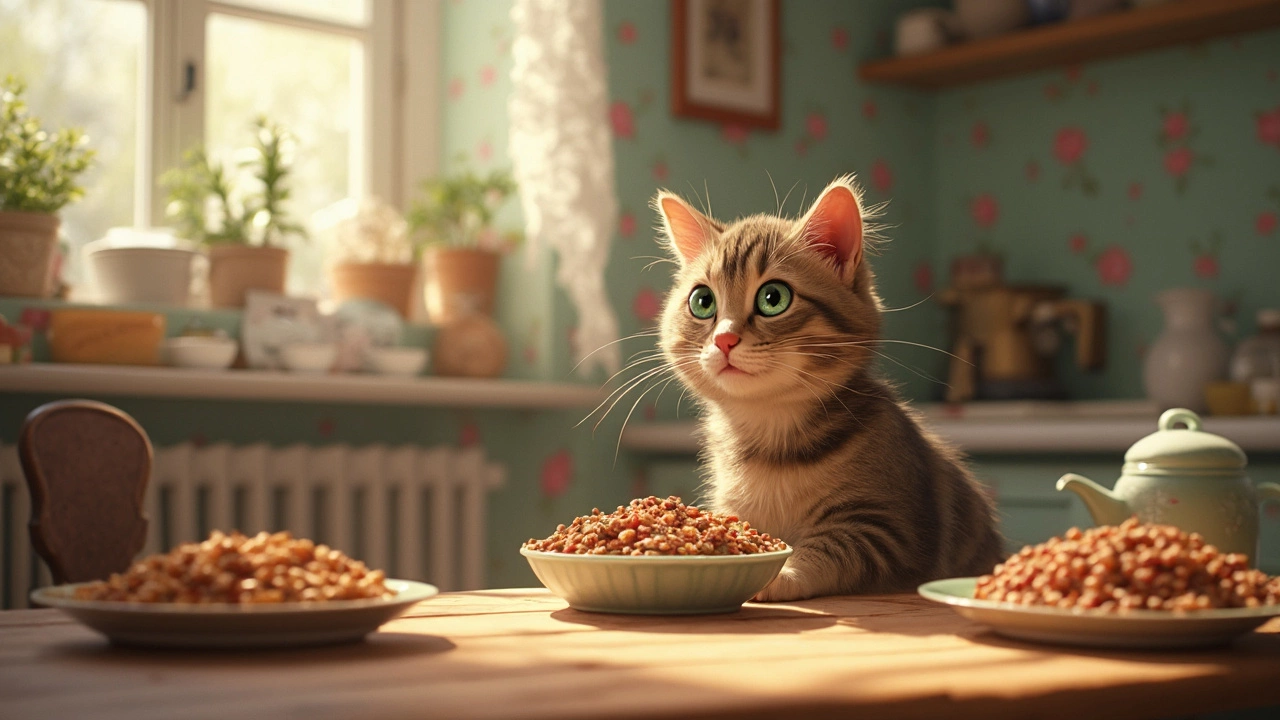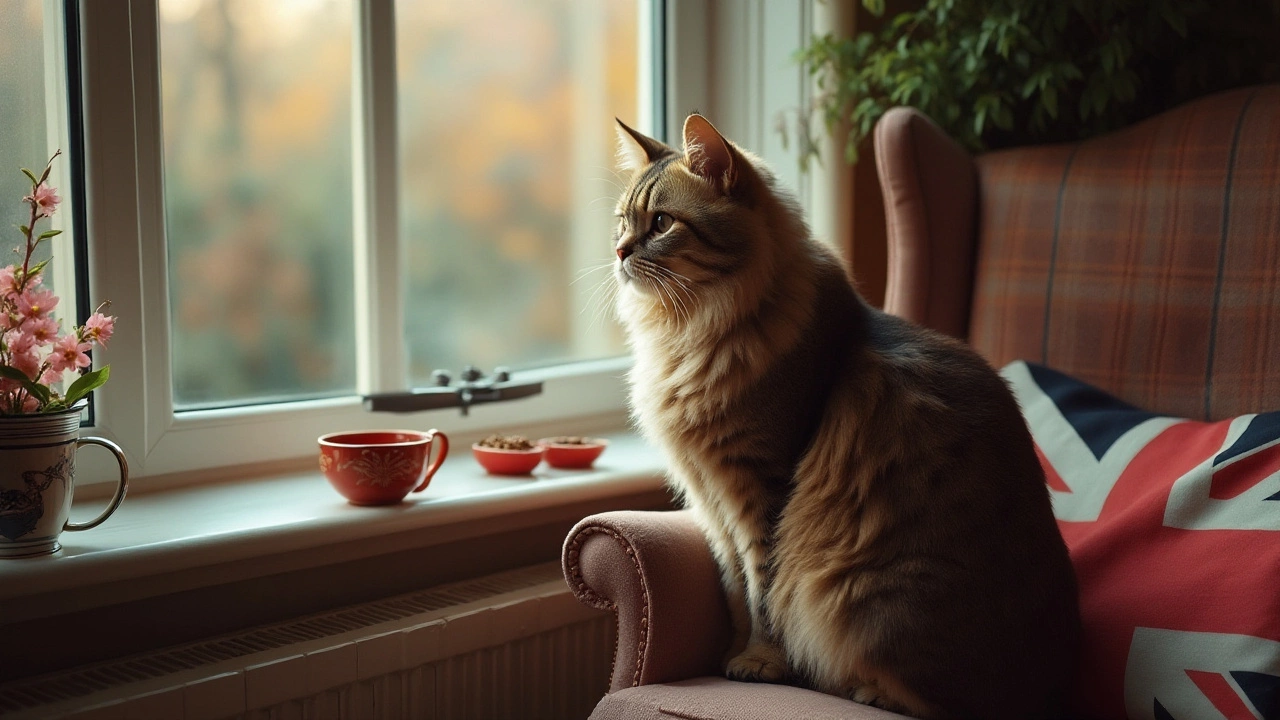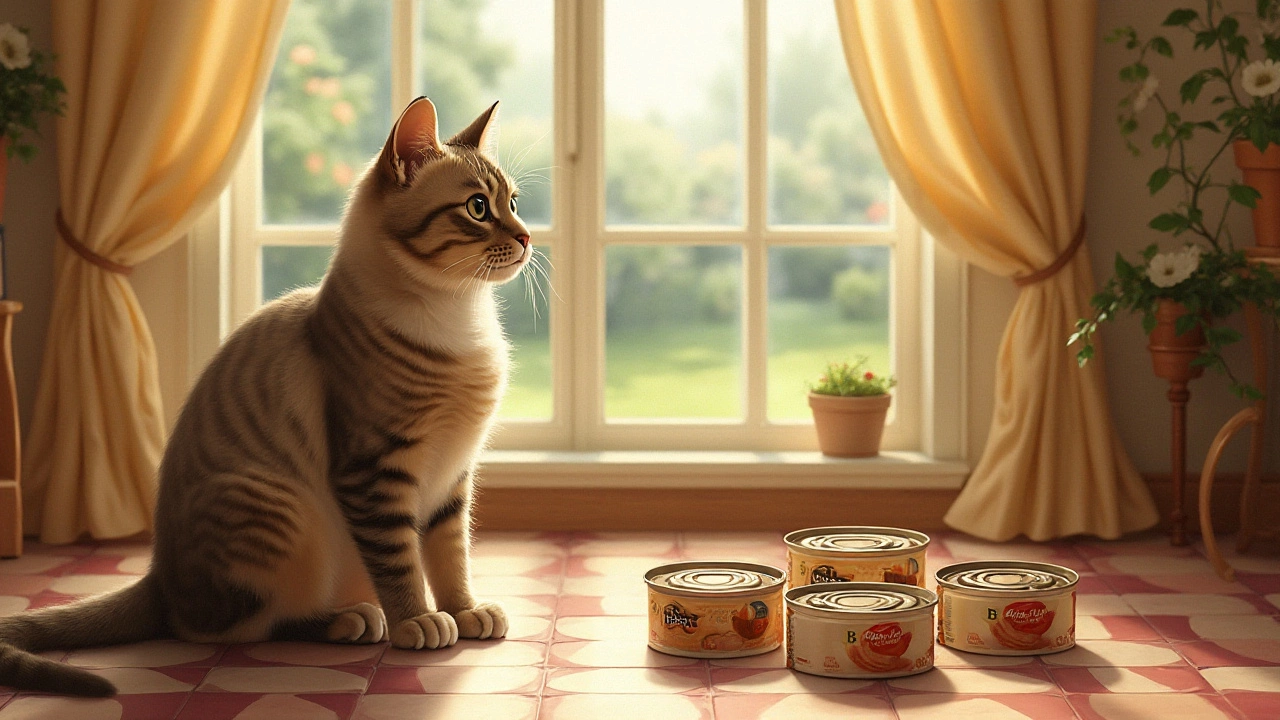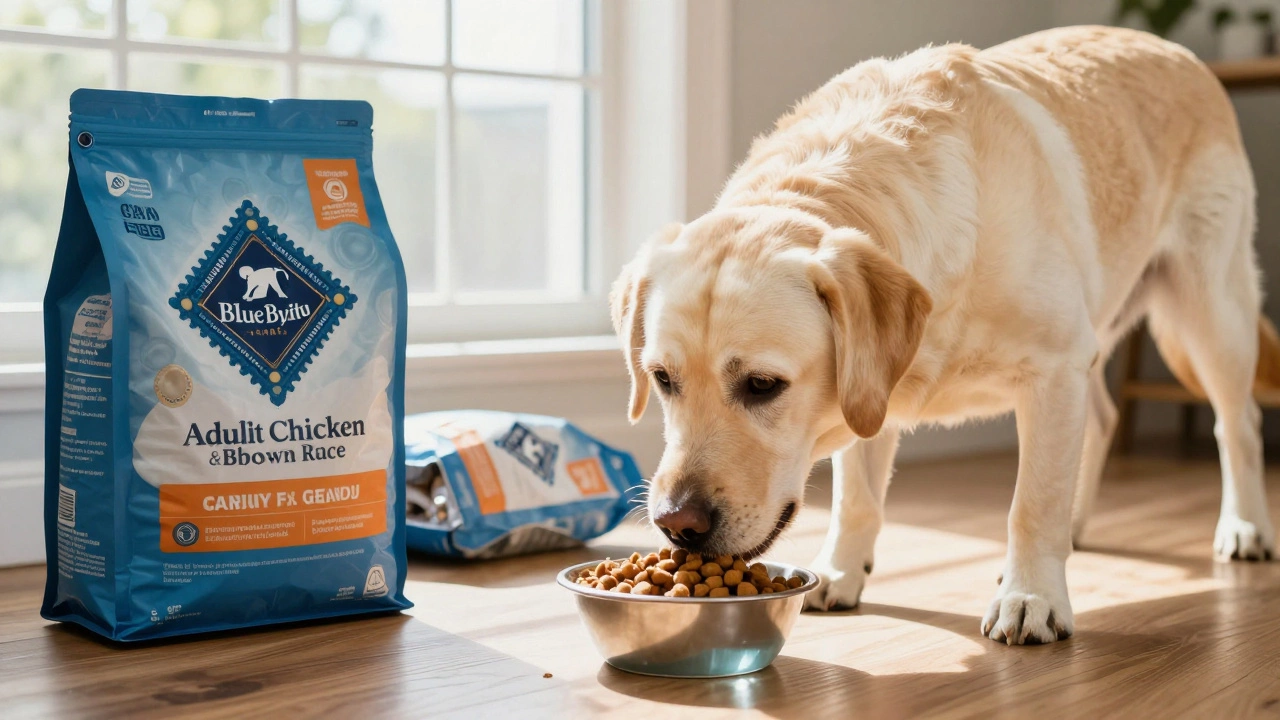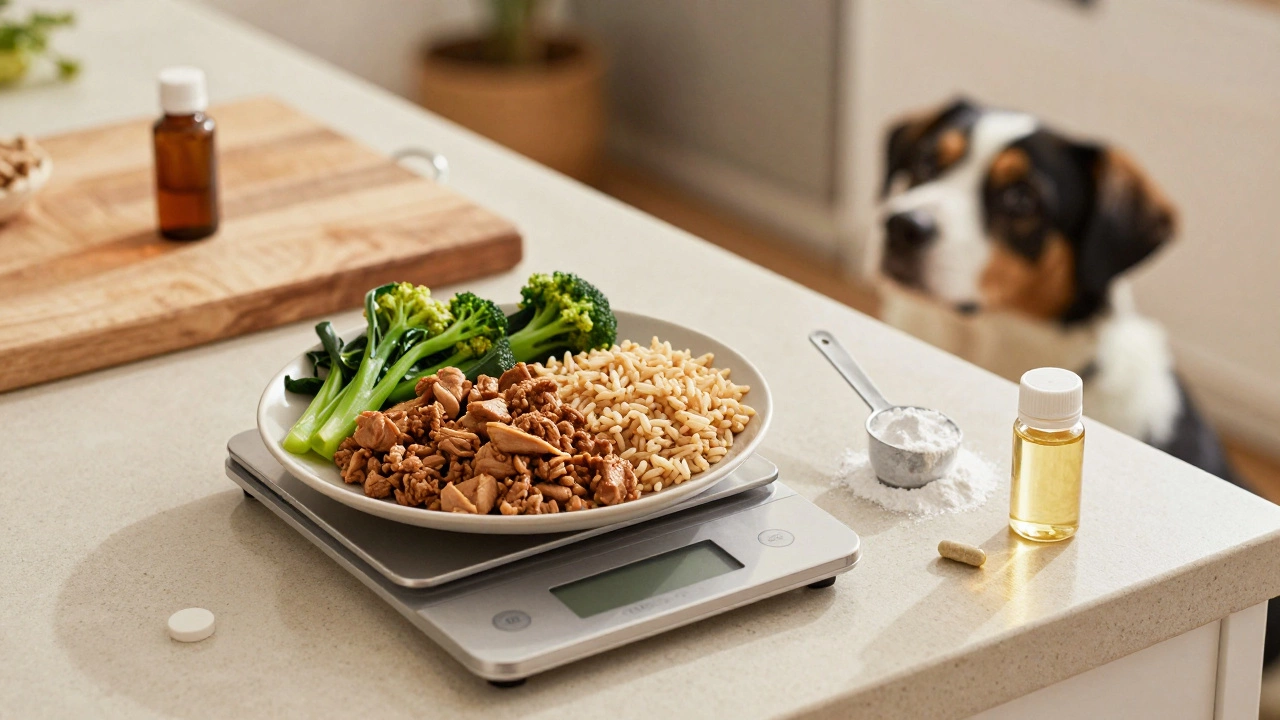Ever looked at your pantry full of dry kibble and wondered if your cat might be craving a little more excitement in their bowl? Adding wet food to the mix could be just the ticket. Blending wet and dry foods for your feline buddy isn't just about adding variety — it can actually enhance their overall diet.
Let's kick off with why you might even want to consider this combo. Wet food generally has a lot more moisture content, which is great for kitty's hydration. Cats aren't naturally big water drinkers, so sneaking in some hydration through their food can be a smart move. Plus, wet food often has a strong aroma and flavor that can turn mealtime into a treat.
But hey, don't just start dumping cans into bowls willy-nilly. A balanced approach can do wonders but requires a bit of thought. First, understanding your cat’s specific nutritional needs is a must. Not all kitties are created equal. Age, activity level, and even the season can determine what kind of diet is best.
- Benefits of Mixing Foods
- Understanding Cat Nutrition
- Portion Control
- Tips for Combining Wet and Dry Food
- Common Mistakes to Avoid
- Monitoring Your Cat's Health
Benefits of Mixing Foods
Why settle for just one type of food when you can reap the benefits of both? Mixing wet food and dry food could be the best of both worlds for your feline friend, and here’s why.
Increase Hydration
Cats are notorious for their finicky drinking habits. They often don’t drink enough water on their own, which can be a real issue for their kidneys and overall health. Introducing wet food into their diet can give them that extra boost of hydration they need. Wet food contains about 70-80% water, which can help prevent dehydration. And let's face it, every little bit helps.
Enhance Taste and Smell
Anyone who’s ever opened a can of wet cat food knows that the aroma is potent — and that’s exactly what many cats love about it. This strong smell can entice picky eaters to chow down. The unique textures and flavors of combining foods keeps things interesting for your cat, making mealtime something they actually look forward to.
Nutritional Balance
Dry food offers a lot of nutritional benefits, like dental health (since it helps scrape off tartar), and it tends to be calorie-rich, making it great for active cats or kittens. On the other hand, wet food offers different nutrients and vitamins that dry food might lack. Blending them can provide a more balanced cat diet, supporting overall health.
Weight Management
Mixing foods can also aid in weight management. Wet food makes cats feel fuller, sooner, due to its high moisture content. This can help in preventing overeating. If your cat needs to shed some pounds, this mix might be just the solution to keep them satisfied without overloading on calories.
Versatility and Convenience
Mixing foods also adds some convenience for cat owners. It allows you to tailor meals based on what's available or what fits your budget while still ensuring your cat gets the nutrients they need. Plus, if you’re ever in a situation where one food type is unavailable, your cat won’t face an abrupt change in diet.
By combining these two food forms, you’re not only keeping your cat interested in their meals but also ticking off several health benefits. So go ahead, let your cat enjoy the best of both worlds!
Understanding Cat Nutrition
To keep your furry friend in tip-top shape, knowing the essentials of feline nutrition is key. Cats are obligate carnivores. What does that mean? Basically, they thrive on animal proteins and specific nutrients found only in meat.
Amino Acids and Proteins
Protein is the name of the game for cats. They need it to maintain muscle, stay active, and support their immune systems. A critical amino acid you’ll often hear about is taurine. Cats can't produce enough taurine on their own, so their diet needs to provide it. Luckily, both wet food and dry food have options rich in protein and taurine to satisfy this need.
Fats And Carbohydrates
Fats provide essential fatty acids and energy, making them another important part of their diet. Don't skimp out on the fatty stuff! On the flip side, cats don't have a dietary requirement for carbohydrates like us humans. They can digest them, but it's not a necessity. So, keep an eye on those carb-heavy fillers.
| Nutrient | Function |
|---|---|
| Protein | Builds and repairs tissues |
| Fat | Energy and essential fatty acids |
| Taurine | Heart and vision health |
Vitamins and Minerals
Just like us, cats need their fair share of vitamins and minerals. Vitamins A, D, E, K, and some B vitamins are crucial. Don’t forget about minerals like calcium and phosphorus, which keep those bones and teeth strong.
Combining wet and dry cat food can help ensure your furball gets a well-rounded diet. Balance is key, and understanding these basics can go a long way in keeping your cat purring happily.
Portion Control
Let's get real about portion control when it comes to your cat's meals. Cats are creatures of habit, and knowing how much to feed them when combining wet food with dry food can help keep them healthy and happy.
Balancing Wet and Dry Food
First things first, you'll want to strike a balance between the two types of food. A typical approach is offering about 25% wet food and 75% dry kibble daily, but this can vary based on your cat’s activity level and size. Always check the feeding guidelines on the packaging, as they usually provide a good starting point.
Measuring By Calories
Considering the calorie content can be super helpful. For example, wet food typically contains around 70 to 100 kilocalories per 3-ounce can, while dry food might pack in about 300 to 400 kilocalories per cup. Depending on your cat's weight and energy levels, daily caloric needs can range from 180 to 300 kilocalories.
Here's a little cheat sheet:
| Cat Weight | Calories Per Day |
|---|---|
| 8 lbs | 180 kcal |
| 10 lbs | 200 kcal |
| 12 lbs | 220 kcal |
Monitoring and Adjusting Portions
Once you have a starting point, observing your cat's health and happiness is crucial. If they're gaining weight or losing it, adjusting the portions is necessary. Make small changes and see how your cat reacts.
Don't Forget the Extras
Let’s not forget any extra treats you might be giving. They add up! Make sure you're including these in the total daily calories.
Remember, while guidelines are helpful, every cat is unique. A bit of trial and error will help you hit the sweet spot that keeps your feline friend purring with contentment.
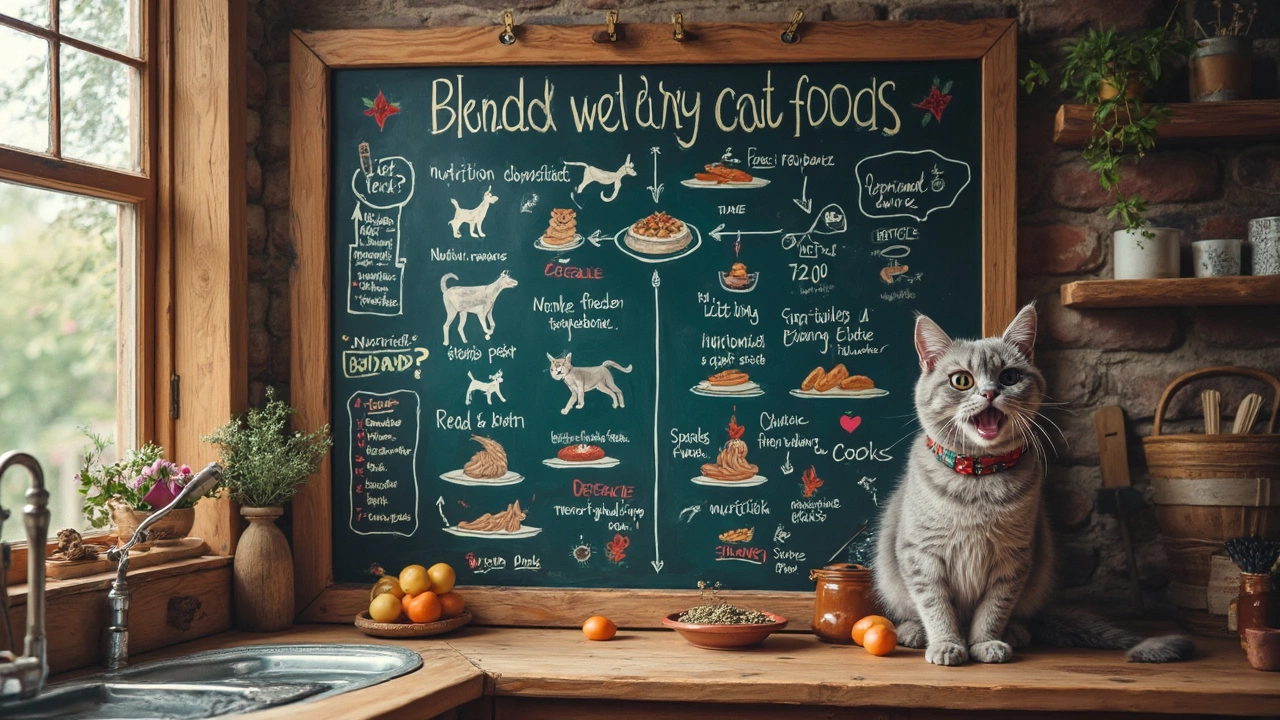
Tips for Combining Wet and Dry Food
Getting the mix of wet and dry food right for your cat can be an art, but with the right tips and tricks, you'll have it nailed in no time.
Start with Small Portions
If you're introducing wet food to your cat's diet for the first time, ease them in with small amounts. Mix a little wet food with their dry food and gradually increase it over time. This helps prevent any stomach upsets and gives your cat time to adjust to new flavors and textures.
Consistency is Key
Cats are creatures of habit. Once you find a ratio that works for your furball, stick with it. Consistent portions help maintain a balanced diet and keep those whiskers happy.
Mix for Meal, Not Storage
While it might be tempting to prepare a big batch of mixed food ahead of time, it's best to combine the cat food at each meal. Wet food can spoil quickly, and keeping it separated until mealtime ensures everything stays fresh.
Listen to the Experts
"Incorporating both wet and dry food into a cat's diet can help ensure they're getting the balanced nutrition they need," says Dr. Jane Brunt, a well-respected feline veterinarian. "But remember to monitor your cat's weight and energy levels as you adjust their meals."
Keep an Eye on Hydration
While wet food does provide extra moisture, make sure your cat still has access to fresh water. Some cats might start drinking less if they're getting more moisture from their food, which is normal, but hydration is always important.
Watch out for Overfeeding
Overfeeding is a common pitfall. Be sure to check the calorie content of both wet and dry cat food and adjust portions accordingly. A little goes a long way, especially with nutrient-rich wet foods.
Monitor Their Health
As you adjust your cat’s diet, keep an eye on their health. Look for any changes in their coat condition, weight, or behavior. If anything seems off, touch base with your vet.
Remember, every cat is unique. What works for one feline friend might not work for another. Trial and error, combined with a generous dose of patience, usually lead to the best results.
Common Mistakes to Avoid
Mixing wet food and dry food for your cat might seem simple, but there are some common pitfalls you'll want to dodge. First up, let’s be real about consistency—cats are picky. Switching their food too often can upset their stomachs or lead to a hunger strike, so introduce new textures gradually.
Ignoring Portion Sizes
One major mistake many cat owners make is neglecting portion sizes. Just because you're combining foods doesn't mean kitty should get twice the amount. A mix can offer a balanced diet but overfeeding can cause weight gain. Follow feeding guidelines on packaging or talk to your vet for advice tailored to your cat’s needs.
Not Monitoring Hydration
If you're upping the dry food, make sure your cat’s getting enough water. Some folks forget that dry food lacks moisture, leading to dehydration. Cats need about 3.5 to 4.5 ounces of water per five pounds of body weight daily.
Avoiding Regular Vet Visits
Another slip-up? Skipping regular vet check-ups. If you're shaking up your cat's diet, regular visits to the vet can help you make sure everything's going smoothly. They can provide insights into any dietary changes, ensuring you're on the right track.
Not Checking Ingredients
Sometimes, we forget to read the ingredient list. Don’t get caught off guard by low-quality fillers or unnecessary additives in both wet and dry options. Opt for high-quality ingredients to keep your cat thriving.
Failing to Store Properly
Storing cat food wrong is easy to overlook but crucial. Always seal wet food properly to keep it fresh. For dry food, make sure the bag is airtight to prevent staleness and loss of nutrients.
Monitoring Your Cat's Health
Okay, you've started mixing wet food with dry food for your cat, but how do you know if this change in diet is really doing its magic? Keeping an eye on your furry friend's health is your best bet. Here’s how you can do it.
Observe Eating Habits
First things first, watch how your cat reacts to the new mix. Are they eating enthusiastically or leaving food in the bowl? A sudden change in appetite could be a sign that something’s off. Most cats will love the variety, but you know your cat best. Trust your instincts.
Check Weight and Body Condition
Keeping tabs on your cat’s weight is crucial. Too much wet or dry food can lead to overfeeding. An ideal way to check if your cat is maintaining a healthy weight is using the Body Condition Score (BCS). A score of 5 on a 9-point scale usually signals a healthy weight. If you notice your cat gaining or losing weight rapidly, it might be time to tweak the portions.
Regular Vet Visits
It’s always a good idea to have regular vet check-ups. A professional can offer insights and confirm if the cat diet plan is working well. They can also run tests if ever you're concerned about your cat’s health. Remember, catching any issues early can make a huge difference.
Look Out for Any Digestive Issues
Keep an eye on the litter box. Nasty aromas or irregularities in your cat’s bathroom habits might hint at digestive issues. Ensuring a balanced mix of wet and dry foods can help in avoiding common problems like constipation or diarrhea.
Monitor Hydration Levels
Our feline companions often don’t drink enough water. Mixing in wet food helps with hydration but watch if your cat is visiting their water bowl more or less often after the dietary change. Dehydration can be sneaky yet serious, so it's something to keep an eye on.
Table: Common Signs of Health to Monitor
| Indicator | Healthy Sign |
|---|---|
| Coat Condition | Shiny and clean with minimal shedding |
| Energy Levels | Active and playful during waking hours |
| Weight | Consistent with no drastic changes |
| Appetite | Strong and consistent feeding routine |
Keeping your cat healthy isn’t just about what they eat but how they respond to it. Stay alert, enjoy the mealtime bond, and your cat will likely be a happy, well-fed companion.

